The Absolute Worst TV Shows That Have Ever Been Made
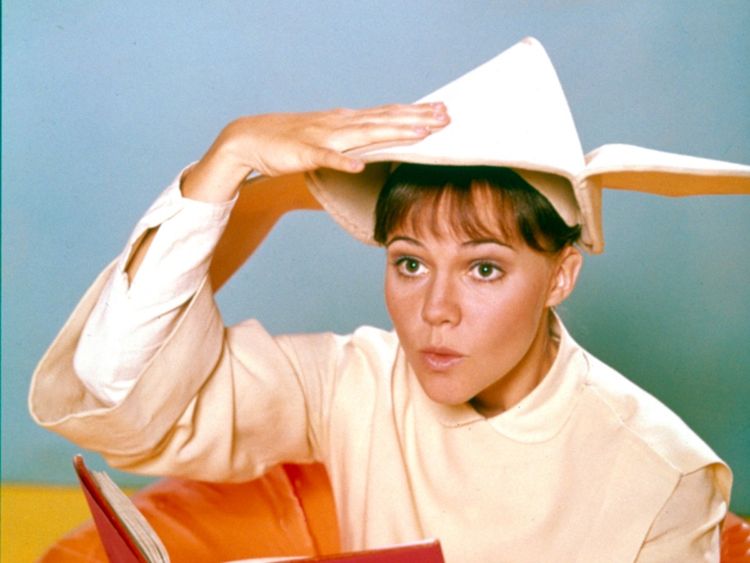
While there are plenty of fantastic TV shows out there, there are some series you’re probably surprised that ever made it past their pilots. And likely some others that lasted much longer than you would’ve expected.
With awful reception from critics, network executives, and viewers alike, these shows were complete flops. From poorly done spin-offs like AfterMASH to variety shows like The Brady Bunch Hour and everything in between, these are the worst series that ever aired on television…
She’s The Sheriff (1987)

In the 1980s, Suzanne Somers was a very popular figure. Her sitcom at the time was meant to be her chance to truly shine. Although we do appreciate the show for its progressive thinking in having a female lead in what is typically seen as a man’s profession, it wasn’t executed well.
After her husband passes away, Somers’ character is suddenly left to fill his shoes. She deals with all sorts of quirky characters along the way, but unfortunately, the show was canceled after only two seasons. The jokes were often stale, and the overall tone of the show was all over the place.
Life With Lucy (1986)

The show wasn’t terrible; it was just different. The series didn’t focus on Lucy’s comedic antics; instead, it was more of a drama-comedy. The series aired for eight episodes before it got canceled, even though 13 had been created.
It’s hard to imagine Ball without her partner Desi Arnaz; however, on this show, she played opposite another man (Gale Gordon). In the end, despite Ball’s efforts to recapture the magic of her past shows, it never connected with audiences.
The Ropers (1979)
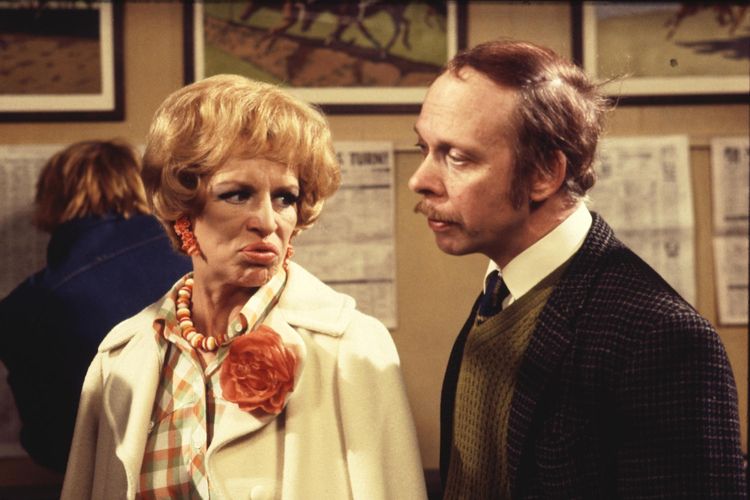
There was a purpose for The Ropers to be made. It was a direct spin-off from Three’s Company. Although the spin-off culture has declined in recent years, it was formerly quite common during the 1970s and 1980s. Audra Lindley and Norman Fell were the show’s heartbeats.
Jeffrey Tambor also played one of the leading roles. Some said that the show was destined to fail because it had a poor time slot. Whether or not that was truly the reason, the show only lasted for two seasons before ending. Though it wasn’t a particularly memorable show, it did have its moments.
Me And The Chimp (1972)
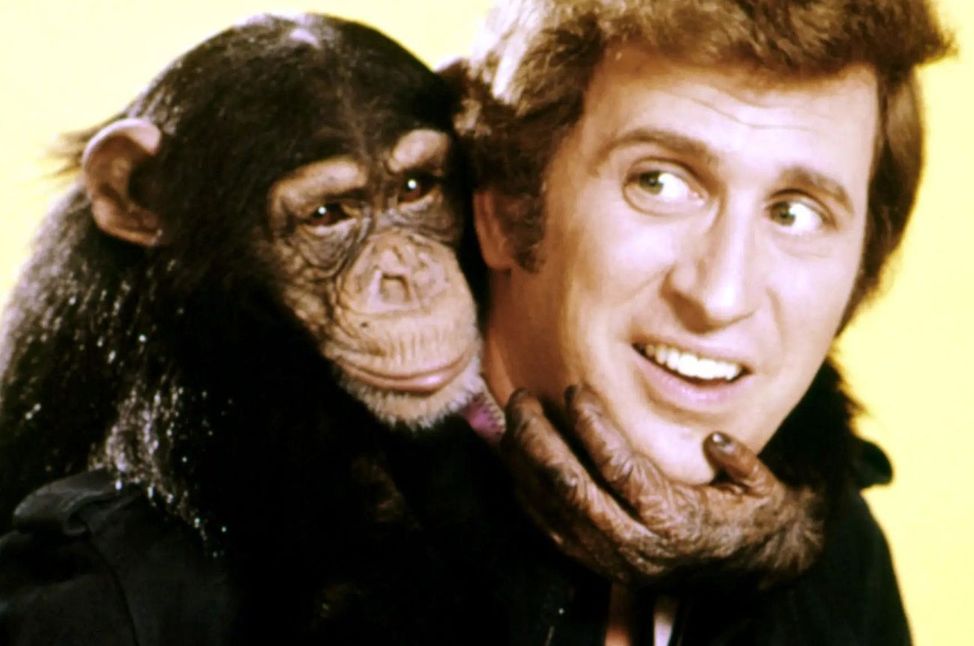
Marshall’s sitcoms often were hits, but this show was not one of his better projects. A family took in a chimp as if they were adopting him, and predictably, the chimp got into all sorts of trouble. There are simply not that many ways you can base episodes around a chimpanzee.
The show was not well-received by critics, with many finding the humor to be juvenile. The writing was also often clumsy, as the writers tried too hard to make the chimp seem like a realistic character. The network only aired 13 episodes before canceling the show due to a lack of content.
Co-Ed Fever (1979)

Co-ed Fever was a “frat house” comedy series that tried to capitalize on the success of National Lampoon’s Animal House. Network TV executives wanted to cash in on the popularity of stories about raunchy college kids. However, this show didn’t have the same kind of success.
The first reason for its failure: John Belushi wasn’t in it. Secondly, it got canceled after just one episode because viewers allegedly called the network to complain about how bad and crude it was. If it had come out in the early 2000s, Co-Ed Fever probably would have found a much larger audience.
The Jackie Gleason Show (1949)

The Jackie Gleason Show is the name of a series of network television shows that were on air for over 150 episodes and nearly 20 years with Gleason as the headliner, of course. As a cast member of The Honeymooners, his comedic appeal took off. Gleason appeared in a number of other series before this self-centered variety program became his primary focus.
It was Gleason’s weight loss that led to the program’s popularity plummeting. His joviality had previously been built around his muscular physique. As a result, when he appeared slimmer, his newer humor simply didn’t have the same impact, with the show eventually disappearing from TV.
Saturday Night Live With Howard Cosell (1975)

Saturday Night Live with Howard Cosell was a variety show that aired on ABC. Howard Cosell hosting an episode of SNL would’ve been one thing, but ABC thought it would be better if its premier sports broadcaster hosted his own comedy hour variety show instead.
Cosell didn’t have any experience in skit creation or comedy, except for a few amusing moments while running commentary during a football game. However, his lack of experience showed, and as expected, the show only lasted for 20 episodes before it was canceled.
The Chevy Chase Show (1993)
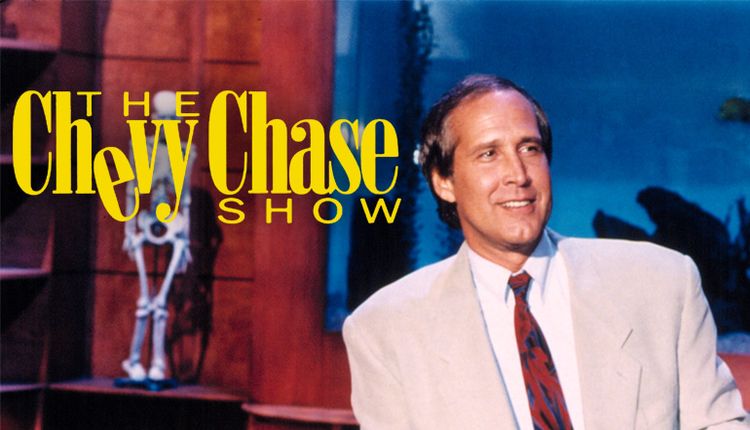
The Chevy Chase Show was a late-night talk show. There have been several instances of comedians being given their own talk shows with the hope that the popular format would succeed. Chevy Chase is a hilarious guy, there’s no doubt about it. As a talk show host, let’s just say his program didn’t go too well with viewers.
FOX aired the show for just over a month before it was abruptly canceled. In future interviews, Chase mentioned that he didn’t like the show, and it was reported that the recycled content coupled with unruly crowds made the experience very odd for everyone involved.
Woops! (1992)
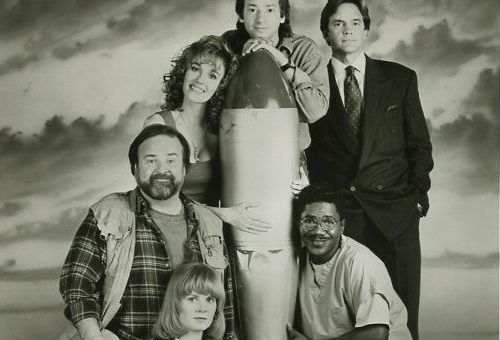
In 1992, FOX gave us Woops!, a show set in the aftermath of a nuclear apocalypse that killed everyone except for six people. These survivors are now tasked with repopulating the planet while living on a farm. The series was canceled after just one season.
Not a single prominent actor appeared in the show, and that didn’t help matters. As a result, just 10 of the show’s 13 episodes were made public before it was abruptly discontinued. FOX did manage to strike gold decades later with another similarly-themed program in Will Forte’s Last Man on Earth.
Makin’ It (1979)
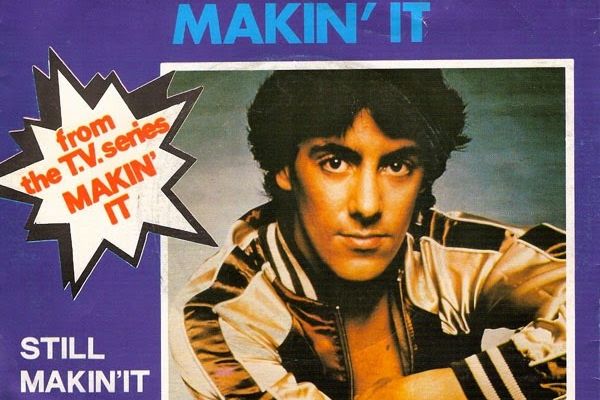
Makin’ It was a sitcom starring David Naughton. It was one of those shows that came out a few years too late. In the 1970s, there were multiple movies and TV shows (most notably Rocky and Saturday Night Fever) of the disco era combined with Italian-American culture. Makin’ It was produced two years after Saturday Night Fever aired on ABC.
The heart of the problem was that disco had died out, and people were immersed in different types of music by the time the show aired. Even though it was co-created by Garry Marshall and Lowell Ganz and featured John Travolta’s sister Ellen, it only lasted eight episodes before being canceled.
The New Leave It To Beaver (1983)
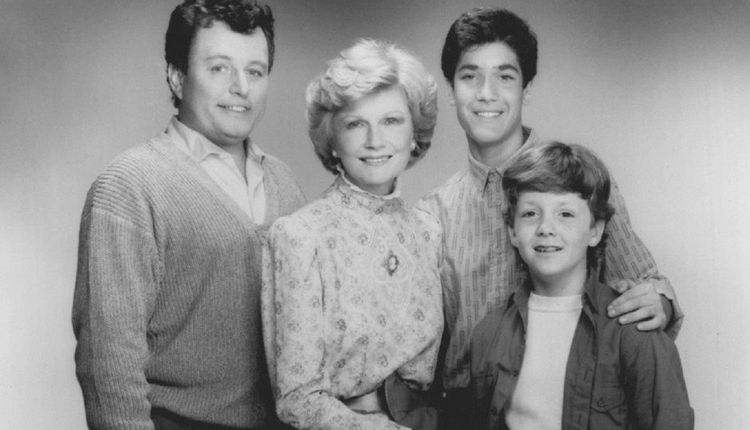
The original Leave it to Beaver was a TV sitcom in the late 1950s/early 1960s that achieved great popularity. Three decades later, an attempt was made to revive the show and recapture its former glory. Unfortunately, this new version fell short of expectations.
The well-loved characters from our childhood were now adults. The program made every effort to recapture what originally made it appealing, as many of the supporting cast returned in some form or fashion. Despite having been on the air for 101 episodes, it probably shouldn’t have been remade.
Hell Town (1985)
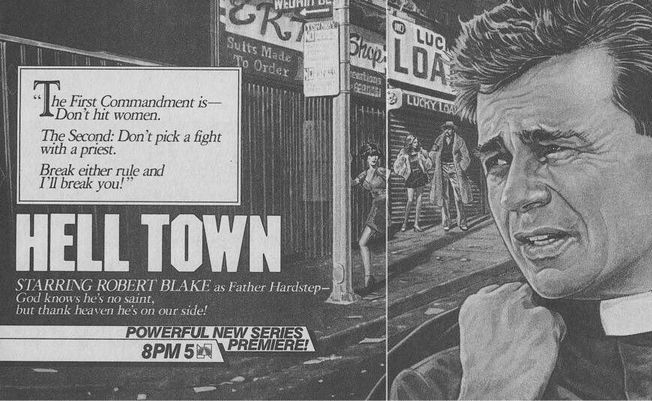
Hell Town follows the show’s lead, Robert Blake, who is a streetwise priest whose primary objective is to help those in need residing in a rough LA neighborhood. What sets this character apart from others is that he can relate to the struggles of living on the streets, as he was once embroiled in that lifestyle himself.
Although the concept does seem intriguing, NBC only aired it for 15 episodes. There is at least one variation of this program that may function in today’s climate. We’ll never know if it had the potential to succeed, but it’s still an intriguing concept.
The Misadventures Of Sheriff Lobo (1979)
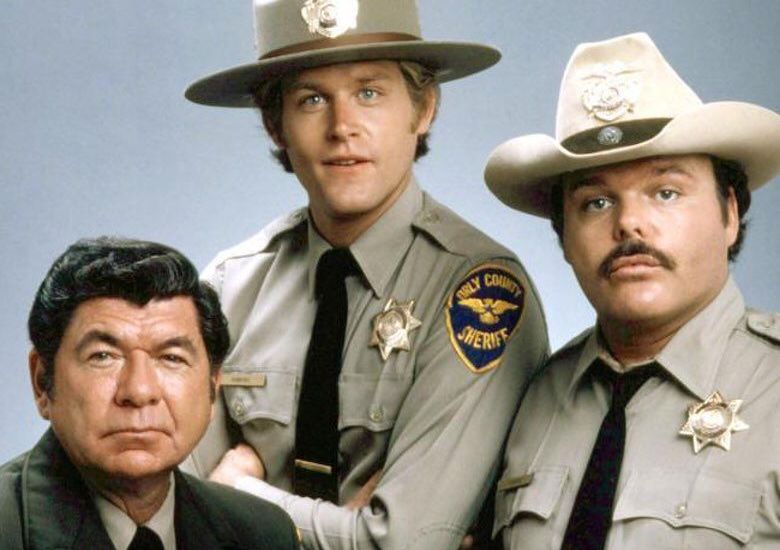
For nearly 40 episodes, Sheriff Lobo was a regular on network TV. The show spun off from B.J. and the Bear, focusing on the lead character. Since it was aimed more at rural audiences, it didn’t do well in more urban areas. It was about a small-town sheriff constantly getting into hijinks.
The humor was often campy and juvenile, which didn’t appeal to all viewers. The show also copied other popular sitcoms of the time, which made it unoriginal. Furthermore, the plot was weak, and there wasn’t a clear purpose for the show. Consequently, it failed.
The Flying Nun (1967)

As the title alludes, Sally Field plays a flying nun in the sitcom, and her character is able to fly when there is a gust of wind. Flying Nun was originally intended to be a drama, but the tone was changed to comedy after ABC executives saw early footage of Field’s character flying.
While we enjoy Field and think she’s a fantastic actress, the concept of this series is completely absurd. It’s remarkable to consider that it lasted as long as it did. The series was produced by Aaron Spelling, who would later go on to produce such hits as Charlie’s Angels and Beverly Hills.
Pink Lady (1980)

Pink Lady was a short-lived variety show that was a disaster from the start. Japanese pop duet Pink Lady (Mei and Kei) had a huge hit in English that was popular throughout the world. Network executives felt that the same format would succeed in the United States because of its success in Japan.
They evidently didn’t know that Mei and Kei weren’t proficient in English. Consequently, the production wasn’t smooth because of both cultural differences and a language barrier. The sketch comedy skits flopped, which caused the show to be canceled after only five episodes had aired.
Holmes And Yoyo (1976)

Holmes & Yoyo was a comedy television series that aired for one season. Many sitcoms center around the comedic cop genre where two buddies who contrast each other work together as police officers. In this particular case, someone had the creative idea to pair a human veteran cop with an android named Yoyo.
Even more bizarre, the android is described as a “secret weapon” to bring down offenders all over the world (the character has many ” superhuman” abilities, such as the ability to read a book in seconds). The series was unsuccessful and was discontinued after 11 episodes.
Unhappily Ever After (1995)
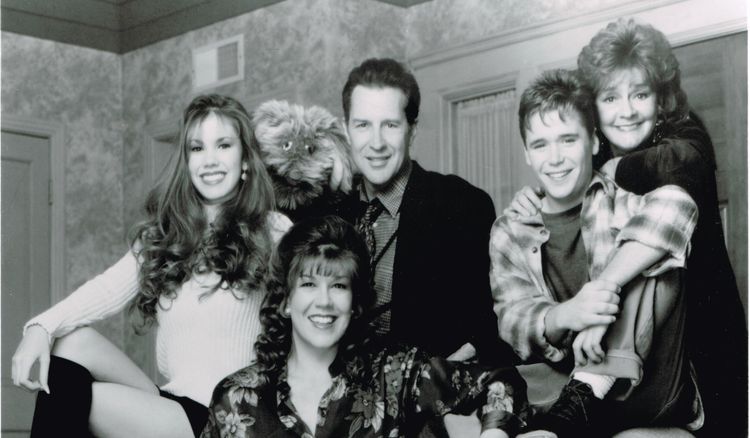
While the ’90s may have been a golden age for sitcoms, it also produced some of the most atrocious shows ever aired. One such example is Unhappily Ever After. Despite the brilliant acting skills of Justin Bergfeld, Nikki Cox, Kevin Connolly, and Stephanie Hodge, the show’s plot was very odd.
For example, we had a talking rabbit character, people being resurrected, as well as comedic parts about drug abuse jokes. Some found the humor to be juvenile, while others simply couldn’t get past the bizarre premise. It surely is not a sitcom that will be fondly remembered.
Supertrain (1979)

Supertrain was an adventure-drama television series that ran on NBC. In order to make the show appear authentic, they had an actual model train made for it. You guessed it- that one crashed and resulted in the network having to spend $10 million on three new sets of trains. At the time, experts said this was the most costly TV series up until that point.
The show was set on a luxurious, state-of-the-art train where people from all walks of life would interact. However, it wasn’t glamorous enough to prevent the show from being canceled after nine episodes. Making matters worse, the show tanked in the ratings.
Turn-On (1969)
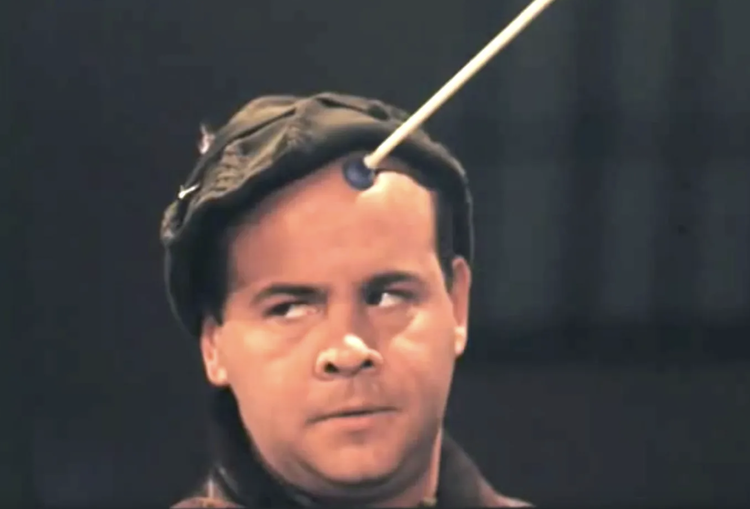
Turn-On was a sketch comedy series that was a turn-off to network executives from all across the country. Tim Conway led this sketch show, which was a bit racy for its time. This show only lasted one episode — and as the story goes, it was canceled midway through that episode.
Viewers were phoning various stations to express their dissatisfaction with the program while it aired. Following the first commercial, several networks didn’t air the program again; instead, they chose to fill the time with empty air space or music.
Sammy And Company (1975)
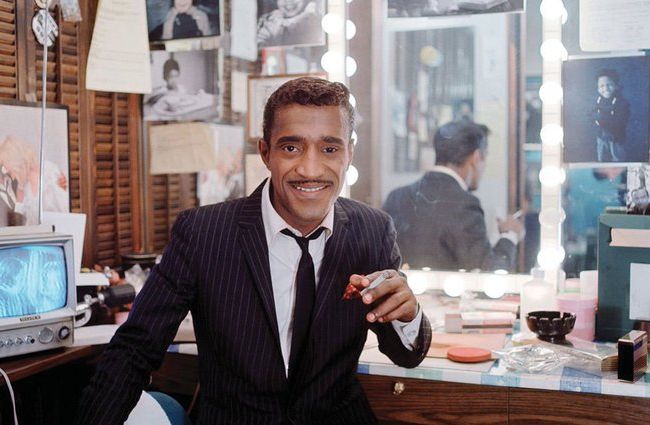
Sammy and Company was a variety and talk-show program hosted by Sammy Davis Jr. Sammy Davis Jr is renowned for being a fantastic musician. Simply stated, he’s one of the greatest ever. However, he couldn’t match this power as a star of a variety show.
It’s not just that the show didn’t land with audiences, but that it also had a hard time keeping them. The first season was the highest-rated, and each subsequent season saw a decline in viewers. Despite being horrible, the show lasted for 53 episodes and spanned over three seasons.
The Powers Of Matthew Star (1982)
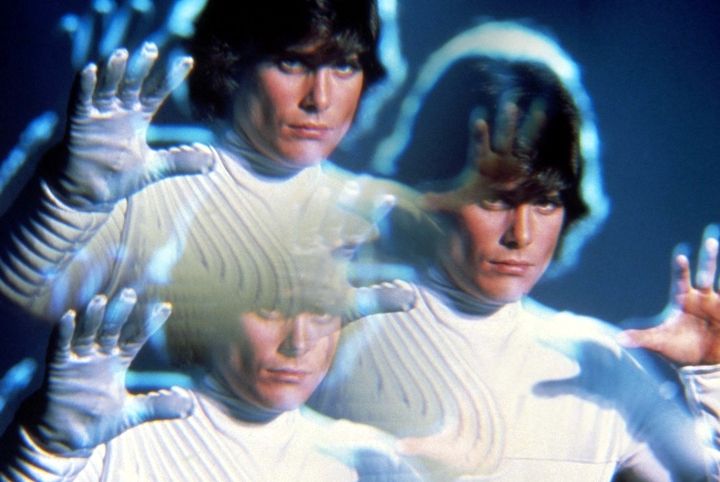
The Powers of Matthew Star was a sci-fi television series that aired on NBC. There’s always the danger that a show that tries to combine the genres of science fiction with comedy, will defeat both of those frameworks. The Powers of Matthew Star wanted to marry the two genres. However, as you may have guessed, it didn’t go so well.
An extraterrestrial teenager was sent to Earth with the sole purpose of fighting crime. Peter Barton, the actor who played the title hero, was hospitalized for months after suffering an on-set accident where he received severe burns. The show somehow aired for a whole season despite being horrible.
Baywatch (1989)
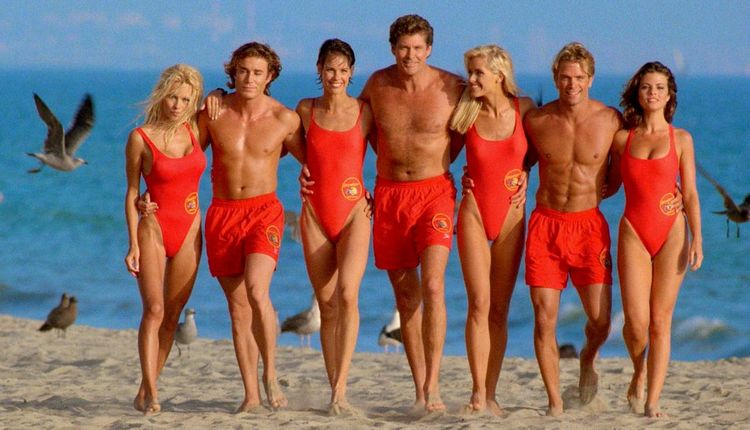
Baywatch was an action drama television series that aired for 11 seasons. It was never known for its award-winning acting or its fascinating stories. Most people watched it to see hot women in bikinis run down the beach or to watch David Hasselhoff attempt to act.
If you’re looking for a deep, meaningful show, Baywatch probably won’t cut it. But if you just want to sit back and watch some attractive people have some fun in the sun, it might pass.
The PTL Club (1974)
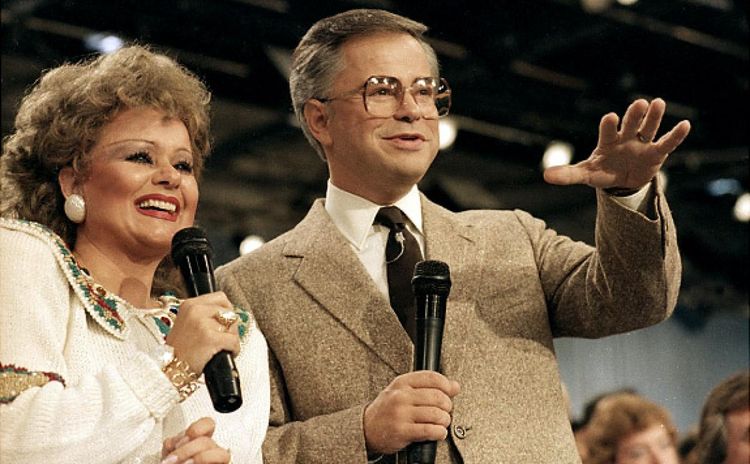
The PTL Club was a Christian television program that was hosted by Jim and Tammy Faye Bakker. The hosts utilized this show to motivate others with their Christian beliefs. The show ran for 14 seasons, which would ordinarily be a significant achievement. However, the show was ruined by scandal — chiefly in the categories of financial and sexual issues.
The number of twists and turns shown was astounding, and many of them were put in place to retain the program within the church’s reach. It ended up being for naught, as the series was ultimately canceled. It was the Bakkers who ultimately ruined their show with their own actions.
The Ugliest Girl in Town (1968)

The Ugliest Girl in Town was a short-lived sitcom that ran from 1968 until 1969. The plot is full of holes and doesn’t make much sense. The main character longs for his girlfriend who lives in the UK. Later on, he helps his brother with a photo shoot by posing as a hippie.
Somehow, a studio in another country heard about the photos and hired a person (who looks like a woman) to be a female model. Of course, the studio is located in — you guessed it — the United Kingdom. The guy must pretend to be a woman for as long as possible in order to meet his girlfriend again.
Manimal (1983)

Manimal was a superhero television series that may have fared better if it were released in today’s climate, a time when superhero-themed TV shows and movies are flooding our TV sets and screens. The show is about a guy played by Simon MacCorkindale, who aids the police in solving crimes and unraveling mysteries.
The catch: this man can turn into any animal instantaneously — including a black panther, horse, snake, bear, or dolphin. According to the legend, the man was ‘trained in an African technique’ that allowed him to change form from human to animal. The show didn’t survive beyond eight episodes.
Baby Bob (2002)
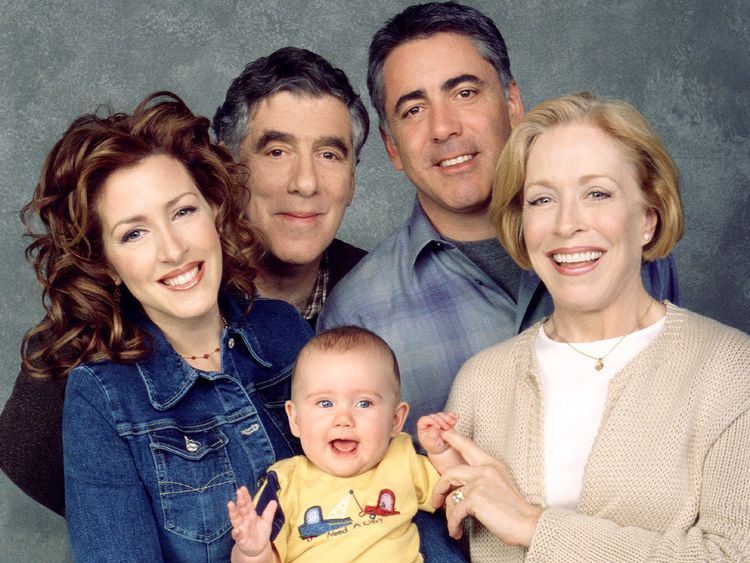
Baby Bob was a sitcom that tarnished the legacies of some very talented actors, including Holland Taylor and Elliott Gould. In the 1990s and early 2000s, there was a weird craze where people became obsessed with babies who could talk like adults. And this show was centered around just that.
Gould, who played the titular character, has been in many good programs, but Baby Bob was not one of them. The CGI used for the baby-talking scenes then looked even worse than they do today, and as you probably could’ve guessed, the show lasted only 12 episodes.
Twenty-One (1956)

The game show Twenty-One, which aired on television around the ’50s, was a popular program. The program became embroiled in scandal leading to its cancellation. After the success of Who Wants to Be a Millionaire on ABC, NBC decided to try its luck by bringing back the show with Maury Povich as the host.
The original game show was more popular and lasted longer because it was during a time when there weren’t as many entertainment options available. Unfortunately, this new version was not well-received by viewers and only lasted for two seasons before being canceled in 2001.
Hello, Larry (1979)
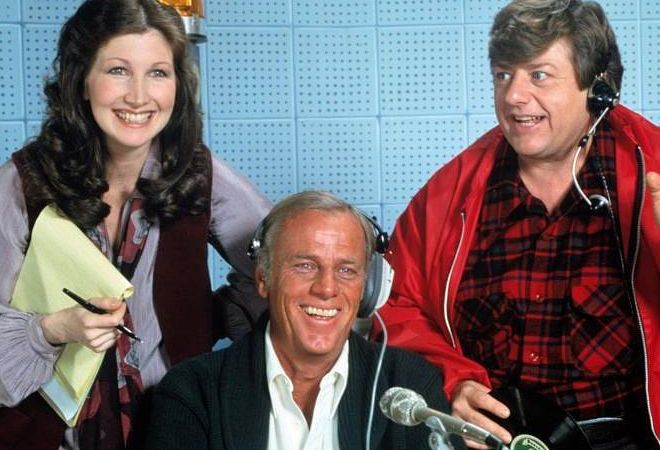
Hello, Larry was a sitcom television series that somehow managed to run for 38 episodes. However, at the conclusion of the final set of episodes, it was widely considered a show whose production should not be continued. The criticisms from the public, calling for the cancellation, were of two parts.
Firstly, the writing didn’t meet the high standards that were set by other sitcoms of that era. Secondly, viewers felt like they didn’t really get to know and connect with the characters. Even McLean Stevenson’s charms couldn’t save the show from being axed.
AfterMASH (1983)

As the name implies, this was a sequel to the popular TV program that preceded it. AfterMASH was a two-season spinoff, and it somehow managed to air for 31 episodes despite being horrible. The comedy in AfterMASH follows the adventures of some of the supporting characters from MASH.
Even though the producers intended to appeal to nostalgia, the series generally received low ratings. It’s one of those ideas that should be left on its own, according to reports. When a project tries to reinvent the wheel, it isn’t always beneficial.
Hogan’s Heroes (1965)

Although Hogan’s Heroes aired for six seasons and had over 160 episodes, reviewers weren’t particularly impressed with the show. The premise followed American troops who were in charge of a POW (military Prisoner of War) camp with many Nazi soldiers.
What’s interesting is that the heavy subject matter was turned into a full-fledged comedy. The show actually won two Emmy Awards during its run. But the main reason why Hogan’s Heroes was panned was because of its lighthearted approach to such a serious topic.
The Brady Bunch Hour (1976)

The goal of this variety show, which features the country’s most famous blended family, was to capitalize on the series’ past success. However, this type of format just didn’t work. Except for Eve Plumb (Jan), virtually all of the original cast returned for this production.
The show was filled with many dancers and colorful sets, yet it was still generally not well-received. The performances felt disjointed, and this was made worse by the fact that some of the cast members reportedly didn’t want to be a part of the show in the first place.
XFL (2020)

The XFL was a football league aimed to be an alternative to the other pro leagues in the world. Vince McMahon, the founder of WWE, created the league with the intention of providing a different set of regulations — all while still delivering many of the entertainment elements.
The ratings were very poor, and the on-field product was so embarrassing that the 8-team league ultimately folded after one year. However, it is planning to return in 2023 — led by former professional wrestler and now global superstar Dwayne ‘The Rock’ Johnson.
My Mother The Car (1965)
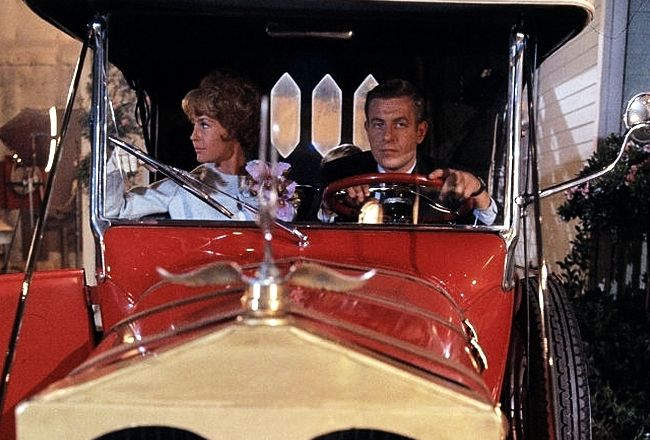
My Mother the Car, featured a man (Jerry Van Dyke) who discovers his deceased mother has been reincarnated as an old 1928 vehicle. He is then able to communicate with her through the car’s radio.
The shocking thing is that this show somehow lasted 30 episodes – that’s about one entire season – despite its horrible premise. Even weirder is the fact that, according to the storyline, a weird villainous car collector aims to do anything he can to procure the talking car from the son.
Who Wants To Marry A Multi-Millionaire? (2000)
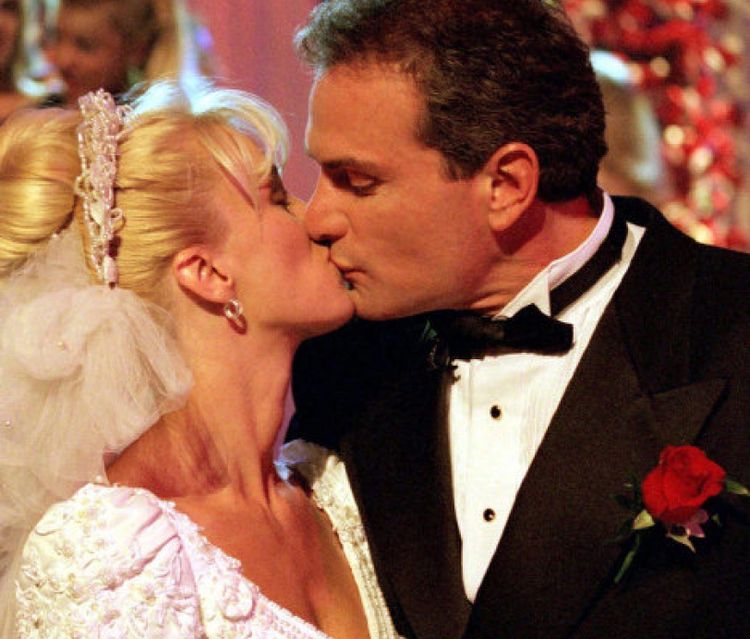
Who Wants to Marry a Multi-Millionaire? was a reality television special in which 50 women were caught up in a competition to marry a multi-millionaire. To make matters worse, the multi-millionaire’s background check revealed that he had a prior relationship with another partner, which resulted in an injunction against him.
The ultimate winner (Darva Conger) did tie the knot with the man (Rick Rockwell), although her marriage was later annulled. It’s not just the premise that was controversial, but also some of the on-air behavior, for example, the gifting of breast implants to a contestant as a surprise gift.
Alexander The Great (1963)
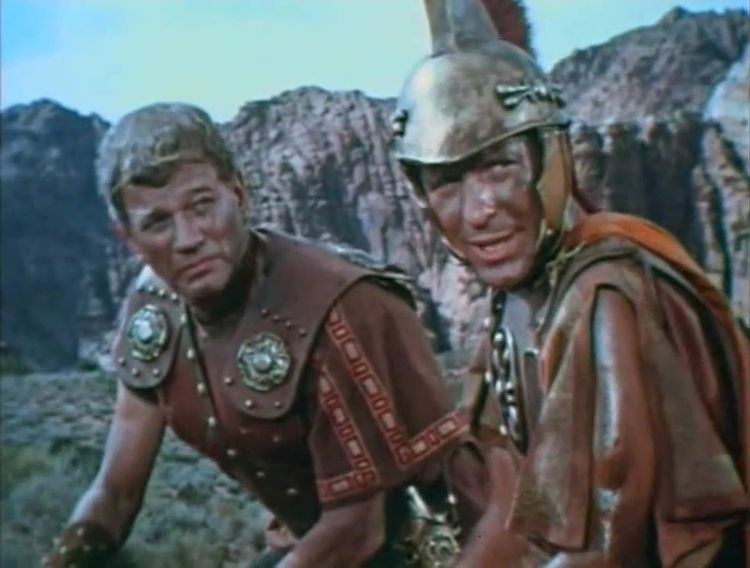
This one-off episode was originally produced by ABC in the early ’60s. Adam West (of Batman fame) and William Shatner were both cast as the leading roles, with John Cassavetes also appearing. Many found discrepancies in the story when compared to other productions with similar plot lines.
Although this was supposed to be a pilot episode, it didn’t take off like they had hoped — resulting in West and Shatner chasing after more lucrative ventures. Interestingly enough, Adam West would go on to play a very similar role in the 1980s TV series The Greatest American Hero.
Bless This House (1971)
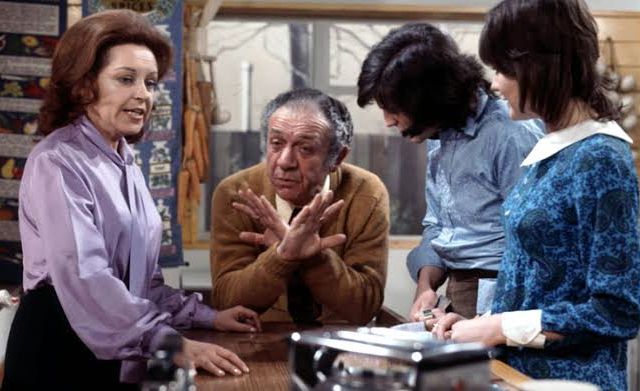
Bless This House was an English sitcom that lasted six seasons. Andrew Dice Clay is an outstanding comic and saying what’s on his mind isn’t something that he shies away from. But, you would never assume that he would be cast in a sitcom as the head of a household.
The vivacious Cathy Moriarty was also included in the series. The program had clunky writing and it fell victim to being halfway between blending a family comedy with something more adult in tone.
The Secret Diary Of Desmond Pfeiffer (1998)

The Secret Diary of Desmond Pfeiffer has a very strange premise. The period piece comedy is set in the past and is about a black man who is forced to leave the United Kingdom and becomes Abraham Lincoln’s butler.
Being a sitcom, hijinks were sure to ensue, but the undertone of slavery was so strong that it was deemed inappropriate. Things got so bad that activist groups were protesting the show before it even aired. Of the nine episodes filmed, only four made it onto television before its cancellation.
Barney & Friends (1992)
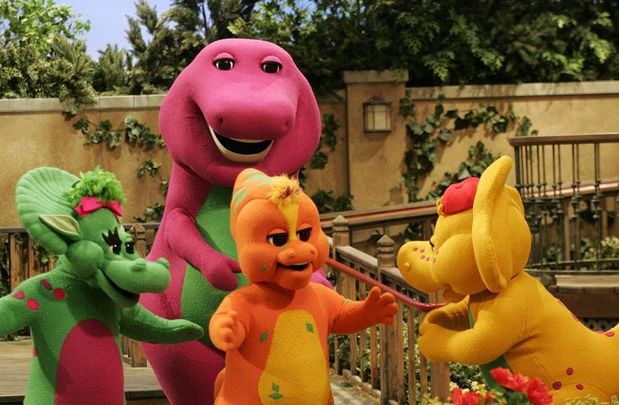
Barney & Friends was a children’s television series targeted at young children aged 2–7. While it wouldn’t outright claim to be a rival of Sesame Street, we’re guessing that Barney was exactly that. It was a huge purple dinosaur who spent a lot of time hanging out with a group of young kids.
Although it may appear chaotic to some, the show ran for 14 seasons and almost 270 installments. Barney was never afraid to tackle important topics, like sharing and taking turns. He also frequently emphasized the importance of good manners. Actor Daniel Kaluuya and his production company are filming a new Barney movie that will be coming out soon.
A.K.A. Pablo (1984)

A.K.A Pablo was a sitcom television series that had a lot of promise. It starred Paul Rodriguez, a rising comic who was making his television debut, and Hector Elizondo, an established veteran. Critics praised the show for its realistic portrayal of life in the inner city, but it was ultimately unable to find an audience.
This show was likely ahead of its time. In the last decade or so, there have been many comedic TV programs that focus on the lives of former comedians with interesting backgrounds. That was the case with this sitcom, as the setting was 1984. After just six episodes, the series was canceled.
The Tom Green Show (1994)

The Tom Green Show was a sketch comedy program with an occasional foray into live-action. It was created by and starred Canadian comedian Tom Green. Tom Green was actually “a thing” in the annals of pop culture during a time when he was heavily influenced by several of his fellow Canadian comics who had preceded him.
Tom Green’s comedy style was always outside the box, and he often associated with other daring comedians like Johnny Knoxville from Jackass. For a while, it seemed as though Tom Green’s career might be over. He disappeared from the public eye for some time but has since made a comeback.
